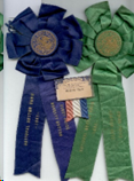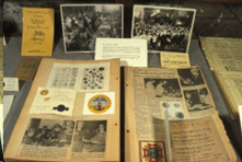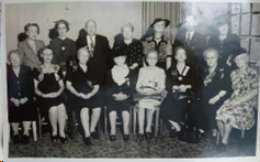





Press Releases
FOR IMMEDIATE RELEASE: 2024 Convention—Hold the Date
2024 Convention Invitation Video
Links to more information you may find useful:
Regional and International Clubs
EnFor the Media/Press
Now celebrating over 80 years as a society, with membership on four continents, the National Button Society (NBS) is actively represented by state and local button clubs in 39 of the 50 states and 16 countries.
NBS members engage in a fascinating journey of discovery, involving history, art, and fashion, that encompass centuries of clothing button usage, as well as related items such as buckles. With a passion for studying, displaying, and trading buttons, members may create art or jewelry using clothing buttons without harming them.
NBS promotes educational research and exhibitions, publishing and dissemination of information about buttons, and related items, and the preservation of their aesthetic and historical significance - all for current enjoyment and for future generations.
History of Button Collecting
Button collecting was first recognized as an organized hobby through the founding of the National Button Society in 1938 after a collector's appearance on the radio show, "Hobby Lobby". The region show sparked a real interest in this unusual hobby, which just about anyone could afford during those lean years, and it sparked a national search of attics, basements and sewing rooms for buttons.
The first Button Show, was held in Chicago in 1939. Many state and local button clubs were established during the 1940s, and many of those clubs sponsored their own button shows, a tradition that continues today with buttons shows held throughout the United States, Canada and Europe.
FAQs for a collector
Q: What do you look for in a button?
A: The historical significance; the subject matter of the button; condition; the material it's made from, intricacy of design & manufacture, does it fit with other categories… Yes, the list is long.
Q: Where do you find your buttons?
A: There are several button shows each year. Sometimes a local antique shop will have buttons; there are online sales and auctions; even telling friends that you collect – they often have their grandmother's button box tucked away.
Q. How do you display or keep your buttons?
A: NBS recommends 9" X12" mat boards placed in categories, such as by materials, shapes, plants, animals, or objects. There are dozens of different categories found in the NBS Blue Book – the official NBS Classification & Competition Guidelines. Also, collectors are innovative in coming up with display and storage ideas: hanging lovely “button pictures” on their walls, storing buttons in wooden printer trays and other handy items, all the while paying attention to what is needed to preserve those buttons. For example, Celluloid Buttons have to breathe so no jars or plastic bags, please.
Q: What is your favorite?
A: Every collector will have a favorite or more than one! Story buttons; china buttons; pearls (shell); black glass; Jacksonians; lacy glass… or even just pretty buttons… you get the picture.
Q: What are buttons worth?
A: Prices range from pennies to many hundreds of dollars.
Q: What advice would you give to a new collector?
A: Join the National Button Society and a state and/or local button club. There are button clubs in 39 of 50 states as well as several clubs in Canada.
Logo and Policies
The name, National Button Society, is a registered trademark of the National Button Society. Specific regulations regarding the use of the Logo are listed . Permission must be applied for and obtained to use any of the images on the National Button Society and Button Country websites.
ter Text








Press Releases
FOR IMMEDIATE RELEASE: 2024 Convention—Hold the Date
2024 Convention Invitation Video
Links to more information you may find useful:
Regional and International Clubs